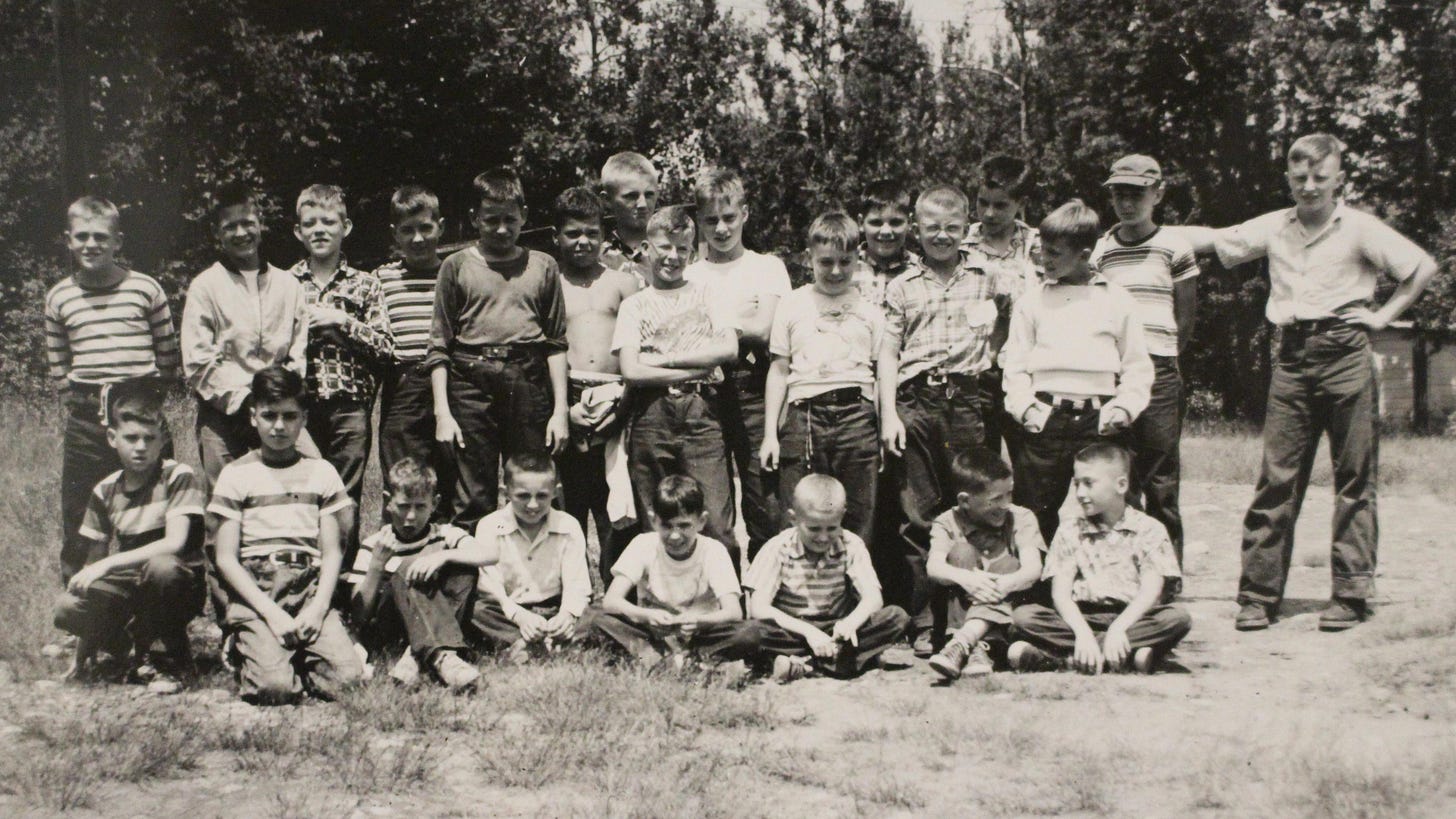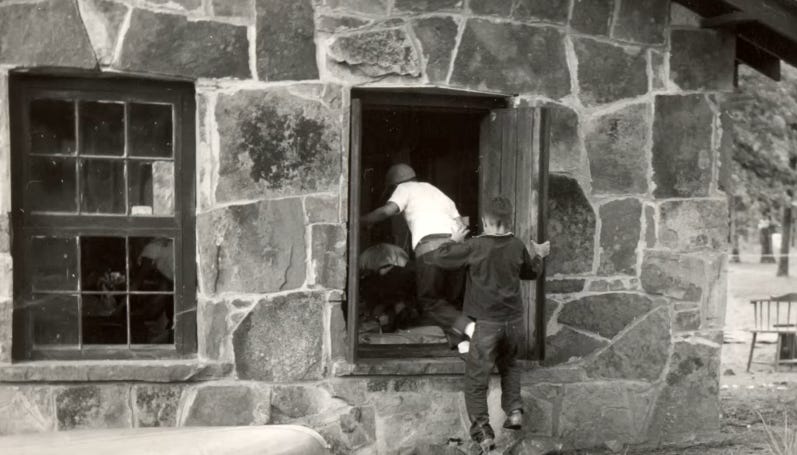🏷️ Categories: Decision making and biases, Behavior, Social relationships
Human beings are social beings and seek to feel integrated in social groups.
The Robber's Cave experiment confirms our most natural instinct. When we are alone we are shy about expressing our personality, but when we are in a group with which we feel identified our personality is enhanced, and it is even more enhanced if there is a group different from ours in front of us.
We are like that, human beings need to label everything, even people in groups.
The Robber's Cave experiment demonstrates why human beings discriminate, prejudge and need to enter tribes in which they feel accepted.
What was the Robber's Cave experiment?
It is probably the most important experiment in social psychology.
In 1954 psychologist Muzafer Sherif designed an experiment to analyze how conflicts between groups can arise and how they can be resolved. Although the experiment was conducted more than half a century ago, its findings are timeless and we can see them every day in our lives.
The experiment was conducted at a summer camp in Oklahoma, U.S.A. Psychologists selected 22 children aged 11 and 12, all from similar backgrounds, physically similar and not knowing each other. they then divided them into two groups. Over the course of the study, both groups developed their culture, engaged in conflict and, surprisingly, managed not to kill each other with sticks and stones.
Experiment phases
Phase 1: Group building. In the first phase, each group of children spent time together doing activities that fostered group cohesion, such as going swimming together, hiking, and creating their own camp. One group was called “The Eagles” and the other “The Rattlers.” Before long, each group developed its own social norms, a culture of its own and an internal hierarchy.
Phase 2: Conflicts between groups. Here the two groups interacted for the first time and faced each other in sports competitions. These competitions consisted of playing baseball, soccer, tug-of-war and others. The winners would get trophies and medals. There were no rewards for the losers.
The Rattlers, who built a strong group trust, began to mark their territory by putting up their group's flags in the camp and on the baseball field. In addition, they began to pick on and pick on the Eagles.
War broke out.
After one of the baseball games that took place, Eagles burned Rattlers' flag.
The next day, when the Eagles left the camp unguarded, the Rattlers raided their hut: they overturned their beds, messed everything up and stole belongings.
The conflict escalated from guerrilla warfare to direct fist fighting, so psychologists had to intervene urgently.
Phase 3: Conflict resolution and cooperation. In the last phase, the researchers asked both groups to describe the opposing group and their own group by means of a questionnaire. Both groups gave very negative judgments of the opposing group while admiring their own group with high esteem.
To reduce hostility, complex tasks were introduced that required the cooperation of the other group to complete. One of these involved fixing the water tank, which had become clogged.
Another task consisted of pulling the truck used by the investigators to bring food to the camp out of a muddy pothole.
Competition for resources fostered violence, cooperation for common goals, peace. The boys finished the camp together, no longer enemies but allies.
Implications of the experiment
Generation of hostility
Hostility between human groups can arise quickly when resources are at stake. This behavior has also been observed in primates and chimpanzees. In a situation of uncertainty, we readily attach ourselves to a group.
Conflict resolution and the common enemy effect
Fortunately, this second finding is more encouraging.
Intergroup hostility fades when goals emerge that require the cooperation of several. That is, we are able to identify goals that benefit us in the long run and put hostility aside to move forward together, even though hostilities may return when the goal is achieved.
In the experiment it is clear when the water or food supply is at risk. The boys vs. the clogged water tank, the boys vs. the truck stuck in the mud.
There is a common enemy and there is strength in numbers.
My vision of the matter
The problem is not the existence of groups, but the lack of common goals.
When we allow differences to divide us, we lose sight of what really matters: our collective well-being. It is all too easy to fall into the trap of polarization, whether in politics, in our communities or on social media. We tend to end up labeling “the others” and defending “our own” as if it were a war instead of negotiating common interests.
In life, as in the Robber's Cave experiment, success is not in phase 2, when you defeat the other, but in phase 3, when you progress with the other.
Every one works for every one else. We can’t do without any one.
Aldous Huxley, Brave New World
See you soon! A hug! 👋
References 📚
University of Oklahoma. Institute of Group Relations, & Sherif, M. (1961). Intergroup conflict and cooperation: The Robbers Cave experiment (Vol. 10, pp. 150-198). Norman, OK: University Book Exchange.













This is pretty basic human interaction that has been done, without experiment, for eons. One example we learned about in Mormon seminary class in high school was the period of conflict between the indigenous people near Utah Lake south of Salt Lake City, Utah in the mid-1800s. The Mormons were also in conflict with the U.S. Government in what is referred to as The Mormon War. Well, when soldiers started abusing the indigenous people as well, both the Mormons and indigenous tribes realized they had a common enemy and worked together instead of attacking each other. That's only one example. I'm certain other societies has similar histories.
This is why I distrust psychology. In the name of science, they (psychologists) design human experiments, either disregarding the dangers to their subjects or proceed just to find a saleable result with or without a predetermined customer--usually a governmental agency. Examples are MKUltra, the Milgram experiments, and The Tuskegee Study of Untreated Syphilis in the Negro Male. There have been and continue to be thousands of such experiments conducted. And it's not just psychology experiments. They do not differ from what the NAZIs and Communists have done.
There is apparently no extent to which governments will go to find new ways to control their subjects. The same can be said of businesses, religions, educators, and anyone else seeking to extend control.